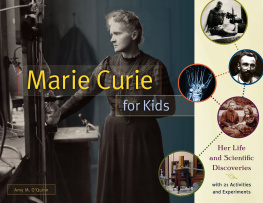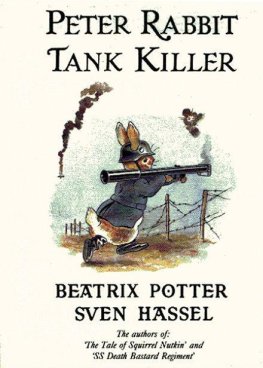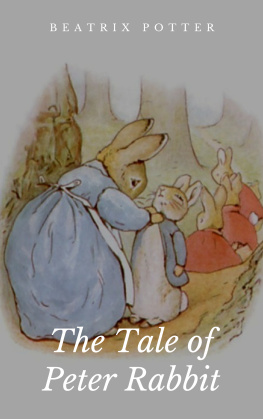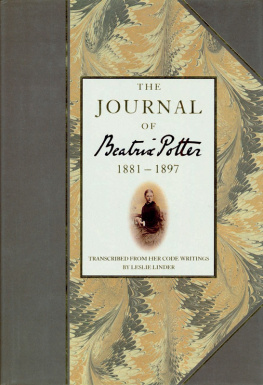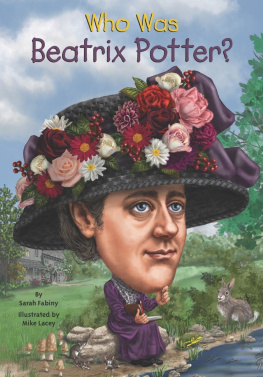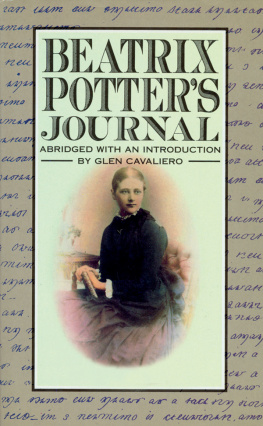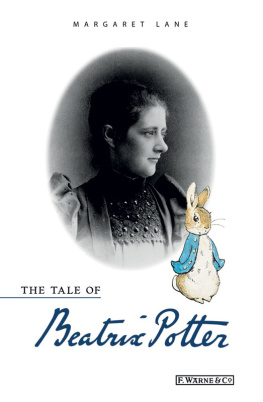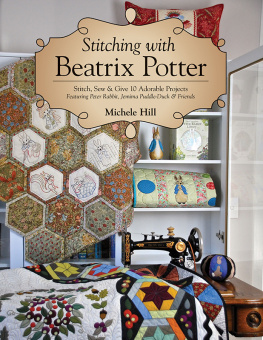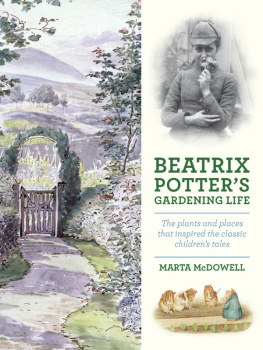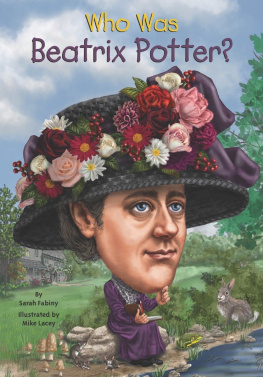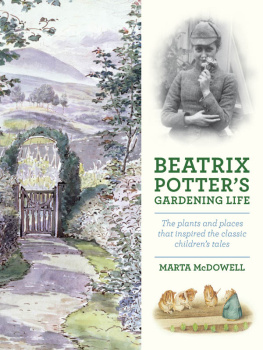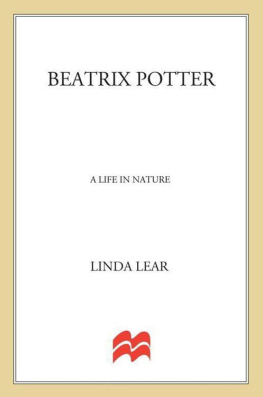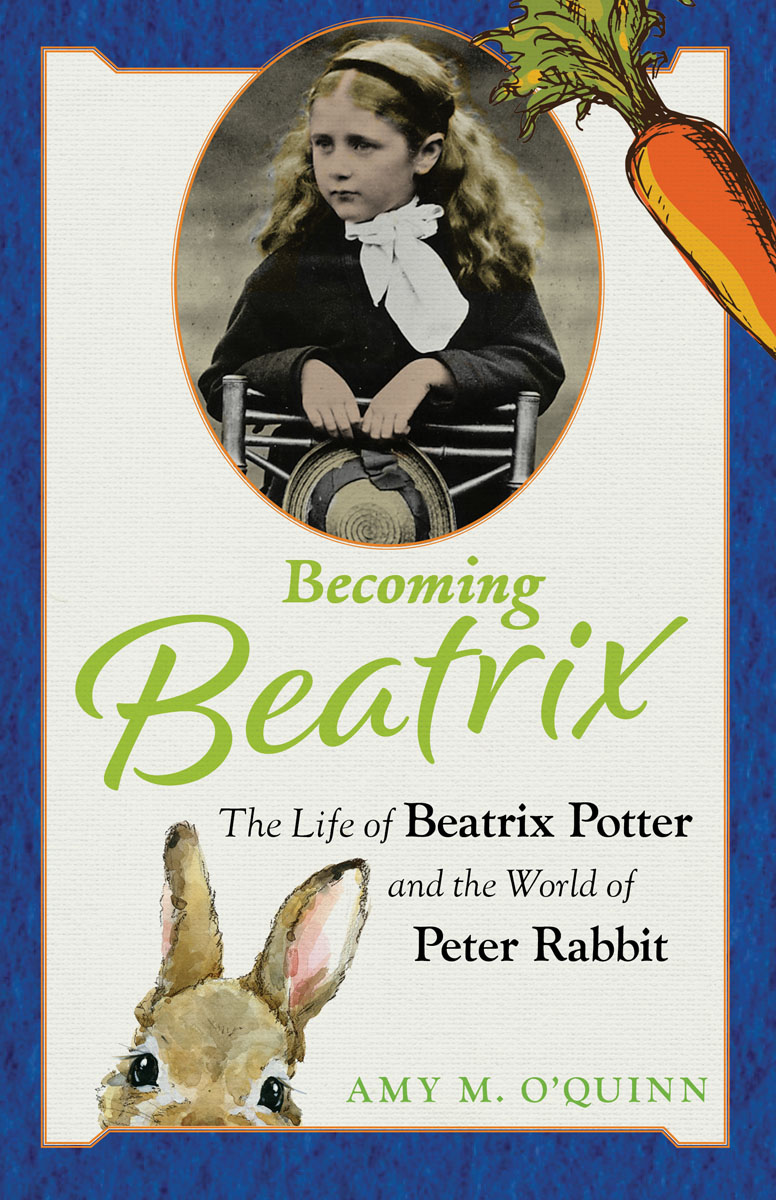
Peter Rabbit, Hunca Munca, Mrs. Tiggy-Winkle, Squirrel Nutkin, Jemima Puddle-Duck readers are familiar with the animal characters created by British author and illustrator Beatrix Potter. But she was so much more than a painter of watercolor bunnies in little blue jackets and ducks waddling about in bonnets and shawls. She was a natural scientist, mycologist, environmentalist, preservationist, and expert sheep breeder. Beatrix Potter was a woman ahead of her time, making her own decisions and handling her own business affairs despite living in a Victorian society that was unaccustomed to unmarried women doing so.
Becoming Beatrix covers Potters early life and influences, artistic work, fascination with animals and the natural sciences, and interest and research in fungi, as well as her writing and illustration journey and her later years as a wife, farmer, businesswoman, and conservationist. This is the story of Beatrix beyond the bunnies.
Copyright 2022 by Amy M. OQuinn
All rights reserved
Published by Chicago Review Press Incorporated
814 North Franklin Street
Chicago, Illinois 60610
ISBN 978-1-64160-440-6
P UBLISHER S N OTE : This book is an independently authored and published work of biography and commentary about the life and work of Beatrix Potter. Some text and images that originated with Beatrix Potter are used in this book pursuant to the Fair Use Doctrine or because they first appeared in works that are now in the public domain. This book is not endorsed by or affiliated in any way with any owner of trademarks based on phrases and images that also appear in the works of Beatrix Potter now in the public domain.
Library of Congress Cataloging-in-Publication Data
Names: OQuinn, Amy M., author.
Title: Becoming Beatrix : the life of Beatrix Potter and the world of Peter Rabbit / Amy M. OQuinn.
Description: Chicago, Illinois : Chicago Review Press, [2022] | Includes bibliographical references and index. | Audience: Ages 8-12. | Audience: Grades 4-6. | Summary: Becoming Beatrix: The Life of Beatrix Potter and the World of Peter Rabbit covers Potters early life and influences, artistic work, fascination with animals and the natural sciences, and interest and research with fungi, as well as her writing and illustration journey and her later years as a wife, farmer, businesswoman, environmentalist, and conservationistProvided by publisher.
Identifiers: LCCN 2021043486 | ISBN 9781641604406 (cloth) | ISBN 9781641604420 (mobi) | ISBN 9781641604413 (pdf) | ISBN 9781641604437 (epub)
Subjects: LCSH: Potter, Beatrix, 1866-1943Juvenile literature. | Authors, English20th centuryBiographyJuvenile litera[Bture. | ArtistsGreat BritainBiographyJuvenile literature. | BISAC: JUVENILE NONFICTION / Biography & Autobiography / Literary | JUVENILE NONFICTION / Science & Nature / Environmental Conservation & Protection | LCGFT: Biography.
Classification: LCC PR6031.O72 Z82 2022 | DDC 823/.912 ]dc23
LC record available at https://lccn.loc.gov/2021043486
Interior design: Sarah Olson
Interior illustrations: HelloPAPER/Creativemarket.com
Printed in the United States of America
5 4 3 2 1

For my mother and sister, Betty McIntyre and Mindy McHughfellow Anglophiles, sheep lovers, and travel companions.
And for my father, Edward McIntyre, lifelong agriculturalist and gardenerjust like Beatrix.
C ONTENTS

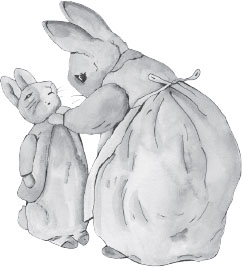
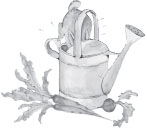
A UTHOR S N OTE
W hen Beatrix Potter was born in 1866, the Industrial Revolution had already changed the world in a big way. There were major advances in the fields of technology, industry, travel, and communication, and cities like London were growing rapidly as more people moved from rural to urban areas. Even so, much of English society still followed firm rules and had very definite ideas about how homes should be managed and how children should behave.
At the time of Beatrixs birth, Queen Victoria had already been on the throne for more than 28 years. The period during her reign was called the Victorian era, and although the queen modeled and encouraged strong family values and good morals, life then was much different than it is today. Babies or children from wealthy families like Beatrixs often had a hired nurse who took care of them until they were old enough to attend school or have a tutor or governess.
These youngsters might live in nursery rooms on an upper floor of the home and perhaps only saw their parents once or twice a day. They ate their meals in the nursery rather than in the dining room with their parents, at least until they were older. They played with their toys, looked at picture books, took walks with their nannies in the neighborhood, wore nice clothes, and were admonished to stay clean and to act prim and proper. They were expected to be seen but not heard. No one during the Victorian era considered these practices unusual.
Young Beatrixs upbringing was probably no different from that of other privileged children of her day. She was often lonely, with only her younger brother Bertram as a playmate. She also had a complicated relationship with her mother and sometimes felt hemmed in by the things she was (or wasnt) expected to do as a girl or young lady in Victorian timeslike marrying an acceptable wealthy husband when she was old enough.
Some earlier biographers considered Beatrixs childhood to be too harsh, but its just the way things were done during that era. However, Beatrix was surrounded by a rich learning environment, and she was able to keep a menagerie of pets (although sometimes secretly), travel extensively with her family, and enjoy many hobbies, such as painting, nature study, and visiting beautiful museums.
Its important keep historical context in mind when reading about Beatrixs lifeand about the amazing things she was able to accomplish.
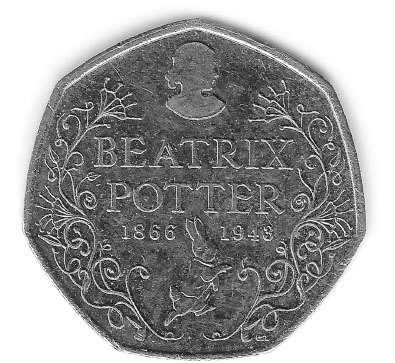
Beatrix Potter Commemorative Coin.Image used by permission of author

I NTRODUCTION
T housands of visitors walk up the Brathay slate path to visit Beatrix Potters Hill Top Farm in the English Lake District region each year. After touring the house, they usually spend time in the old-fashioned garden, viewing the wooden beehive box in the bee bole, admiring the garden gates and doors, vegetable beds, and beautiful heirloom plants and flowers. If they look toward the front pasture, they will probably see Herdwick sheep frisking about.
Occasionally, a guest may catch a glimpse of a rabbit resting beneath a rhubarb plant or hopping near the slate garden wall. Could it be Peter Rabbit trying to sneak past Mr. McGregor to get to the gate? Or is it Benjamin Bunny trying to help his naughty cousin retrieve his little blue coat and slippers left behind during an earlier adventure?


